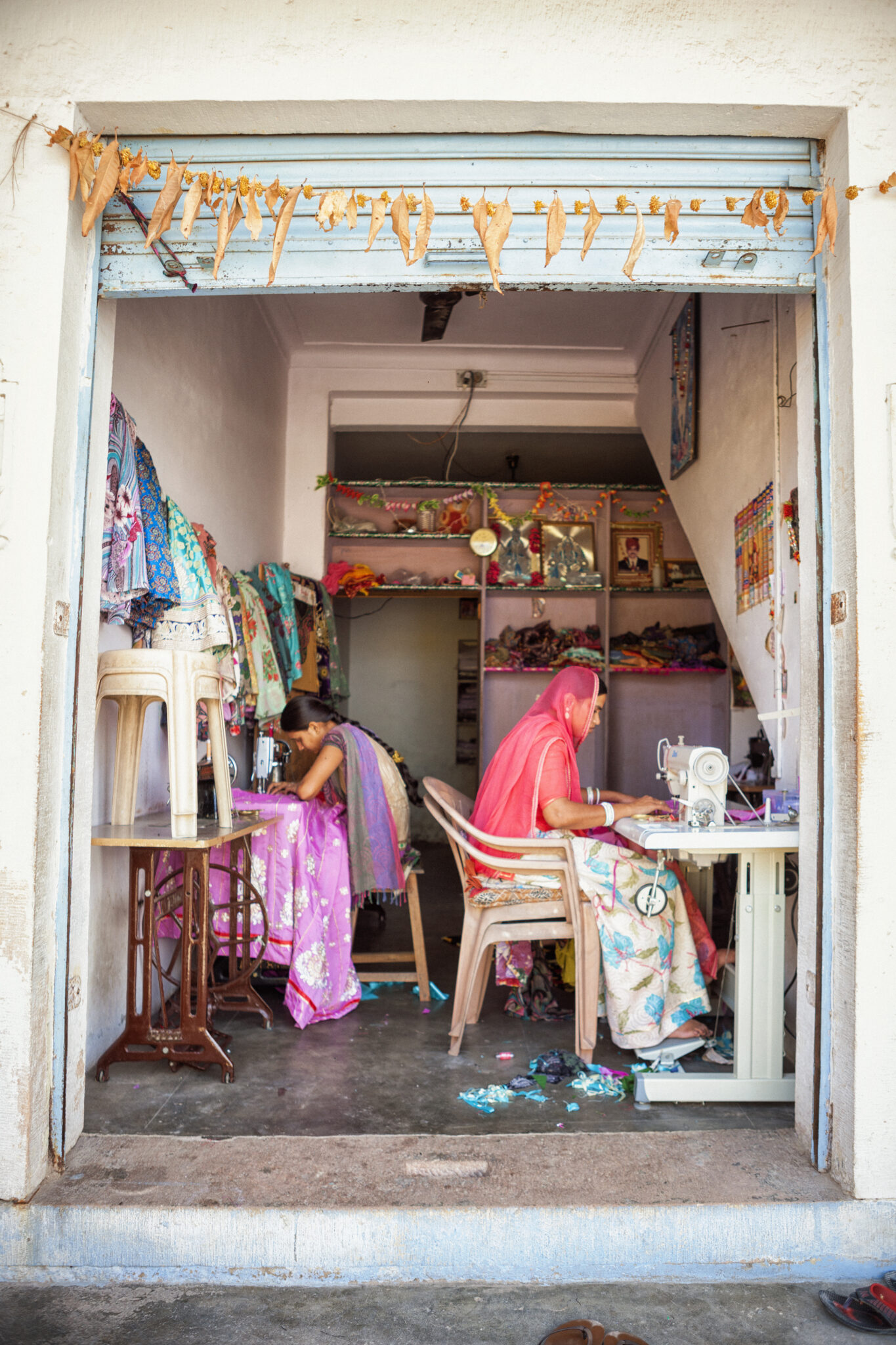What Works for Women? Demand for Alternative Work Arrangements in Urban India

Two women sewing in a small shop on the street of Nimaj, India. Photo Credit: Shreya Sarkar
Study Context
In India, the rate of employment for urban women was 5.4% as of February 2021, representing a steady decline from 10% in 2016. Given that such a small fraction of urban women are employed and a small fraction are looking for a job, an important question arises. What kind of alternative work arrangements can push women to consider entering the labor market?
With the emergence of several gig-economy services (& service providers) and female focused job opportunities (such as spa services at home etc.) – women in urban India now have access to several types of flexible work arrangements. Shreya will study the role of constraints that gig economy jobs could alleviate in order to understand the flexible work arrangements that can increase female employment in India.
Study Design
Shreya will estimate the willingness to pay (WTP) of the female workforce by employing a discrete choice experiment for applications to a regular 9-5 job with no flexibility vs. a gig-economy type job wherein some parts of the job arrangement are varied. These variations include:
1) Ability to pick working hours in a day
2) Ability to pick which days of the week to work
3) Ability to pick location of work
4) A combination of all above
Wages will be randomized in order to estimate the willingness to pay for this flexibility. Results will be used to design an experiment where women will be randomly assigned and offered different flexible job arrangements – to pin down job retention and productivity.
Results and Policy Lessons
Project ongoing; results forthcoming.

